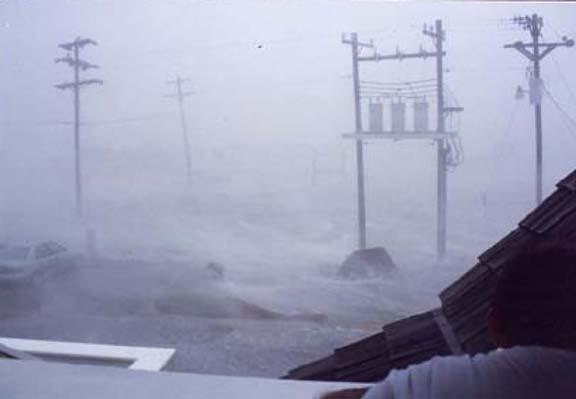Hurricane Andrew
NPR | Hurricane Andrew's Legacy: 'Like a Bomb' in Florida
Washington Monthly | "The FEMA Phoenix"
Huffington Post | Hurricane Andrew: 20 Facts You May Have Forgotten


Washington Monthly | "The FEMA Phoenix"
Huffington Post | Hurricane Andrew: 20 Facts You May Have Forgotten
Hurricane Andrew hit the Bahamas and Florida over a period of four days in late August of 1992. The storm began off the west coast of Africa and passed just south of the Cape Verde Islands. On August 17th, it became a tropical storm. As it moved northwestward across the Atlantic, a series of changes in the atmospheric pressure began to intensify the storm. On August 22, Andrew became a hurricane and the next day had already increased to a Category 4 hurricane. It passed over the Bahamas on that same day. On August 24th, it made landfall on Florida as a Category 5 hurricane. It weakened to a Category 4 and then finally to a Category 3 as it made landfall in a sparsely populated area of south-central Louisiana. At the time, the hurricane was the most expensive natural disaster in United States history.
Those affected were incredibly unprepared for the storm, particularly in Florida. Hurricane Andrew came during an uncharacteristically quiet hurricane season. Most residents were not concerned with hurricanes at all. Due to its quick intensification, residents only had a day to prepare for the storm. Additionally, the weather forecasters did not have the right technology to accurately predict the storm. They relied on a single satellite for observations and took wind speed measurements from an airplane flying through the storm at 10,000 feet.The effects of the hurricane in Florida varied greatly from neighborhood to neighborhood based on construction. Many newer homes had been built with county-approved cheaper materials such as weaker strand board instead of plywood and staples instead of roofing nails. Because of this, many homes were woefully unprepared from the high winds. On the bright side, many Floridians did listen to warnings - 55,000 left the Florida Keys, 517,000 left Miami-Dade County, 300,000 left Broward County, and 315,000 left Palm Beach County.
The Category 5 hurricane had winds of up to 165 mph and storm tides as high as 17 feet. It rained up to a foot in some places. A little less than 70 people died as a result of the storm. While the death toll was not tremendous, the physical damage from the storm made Andrew the costliest hurricane in the United States at the time. Hurricane Andrew would completely ruin a 50-mile patch of Florida, leaving 200,000 residents homeless and 1.3 million without electricity. It would cause about $26 billion in damages for Florida. 25,524 homes were destroyed and 101,241 more would be damaged. Mobile homes fared even worse - 90% of mobile homes in the southern part of Florida were destroyed.
Locally, officials were overwhelmed by Hurricane Andrew. The disaster had affected many of their own homes and they were placed in the same situation as those they were tasked with helping. Even if they hadn’t been affected, they simply didn’t have the resources to help Andrew’s victims. And so they turned to FEMA…
FEMA’s response to Hurricane Andrew was terrible. Their incompetency in the days after Hurricane Andrew was frankly embarrassing. For the first three days after the hurricane hit, FEMA was nowhere to be found. President Bush visited the sight in Florida and made many promises, but the help still wasn’t arriving. Necessities such as food, water, medical care, and shelter were scarce. County officials were asking FEMA for help, but FEMA would constantly turn them down if the proper paperwork and signatures were not obtained. A very frustrated director of Dade County’s Emergency Management, Kate Hale, made the famous comment to reporters, “Where the hell is the cavalry on this one?”
After Hale’s comments, FEMA did finally arrive in Florida, however, they still seemed unprepared. Food and water distributions centers did not have enough in stock and could not meet the demand. The mobile hospitals arrived late, also. The disaster of their response to Hurricane Andrew would draw intense national scrutiny to the agency and eventually lead to many changes within the organization.
| Map of Andrew passing over Florida |
 |
| During Hurricane Andrew - Florida |


 |
| Before and after picture of destruction in Kendall, Florida |
No comments:
Post a Comment